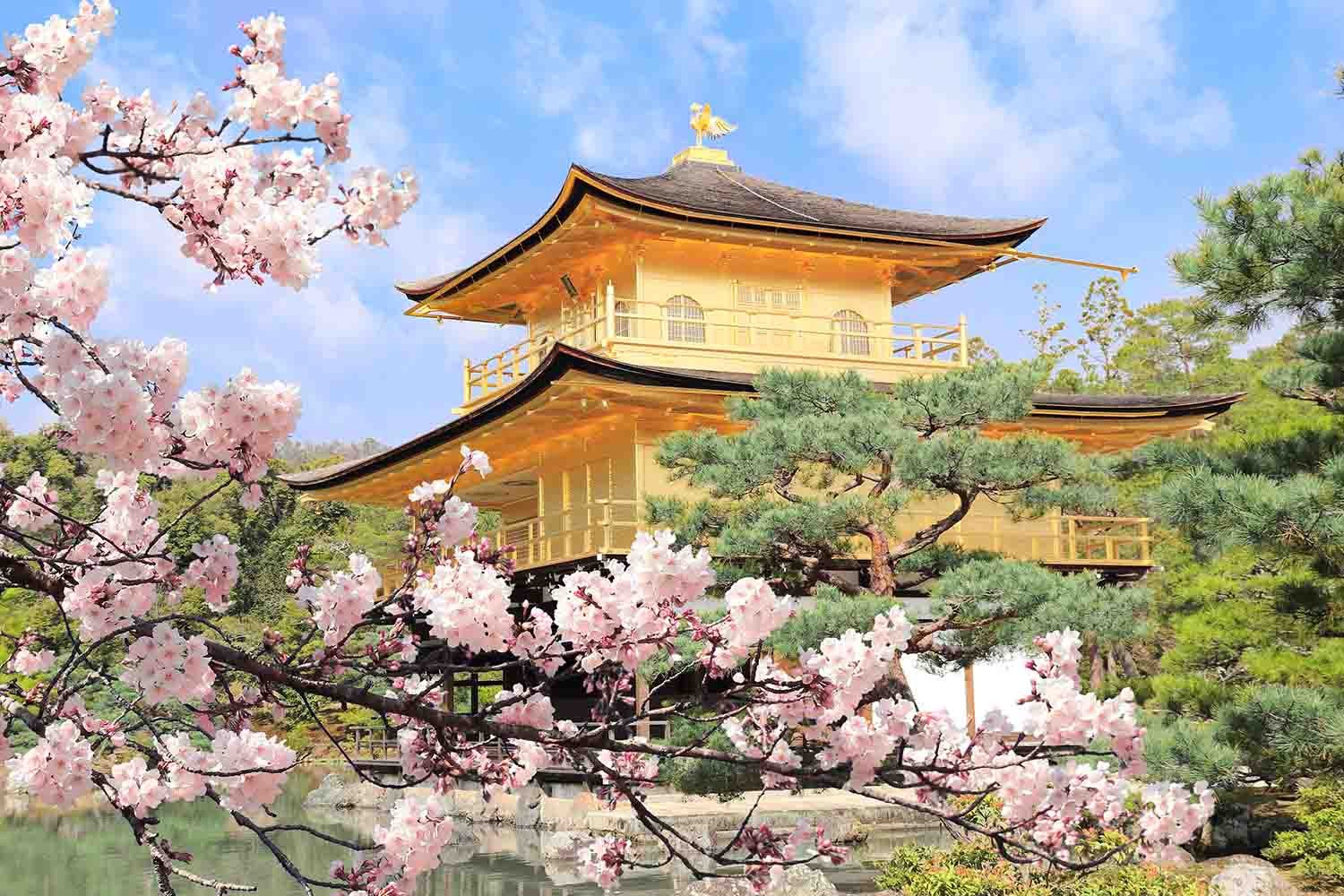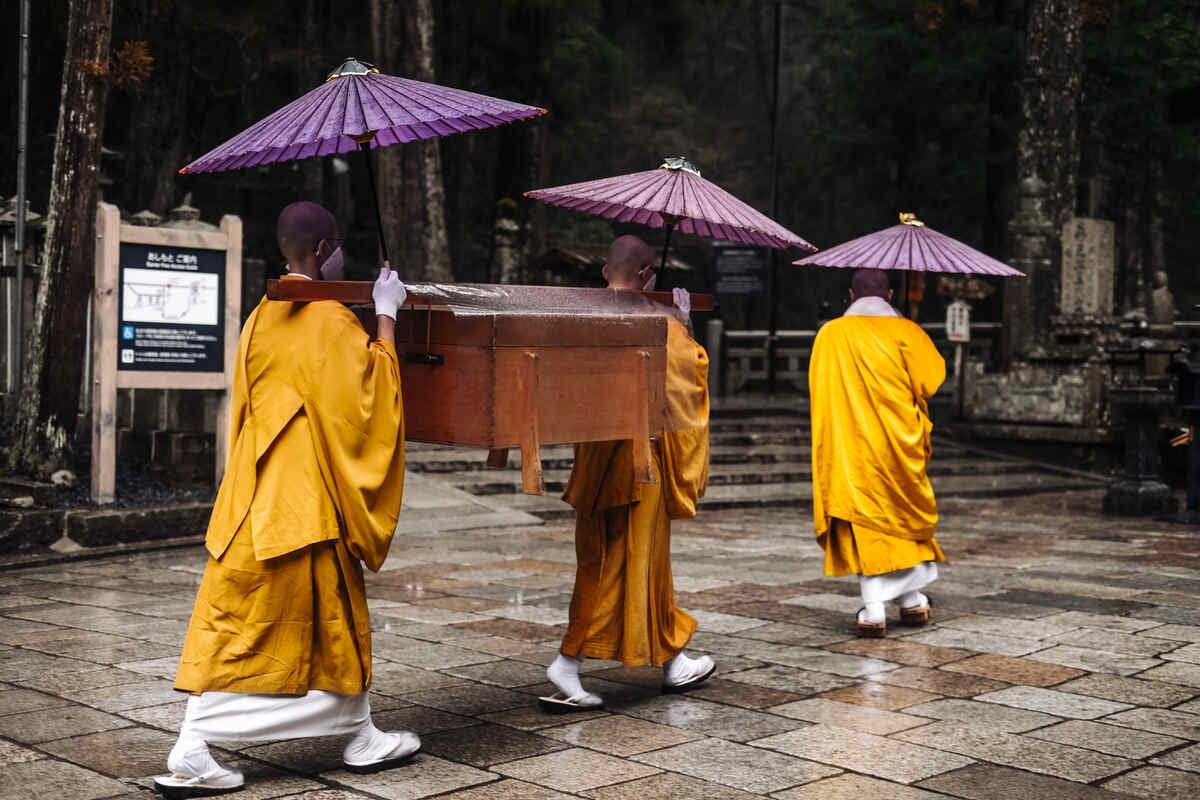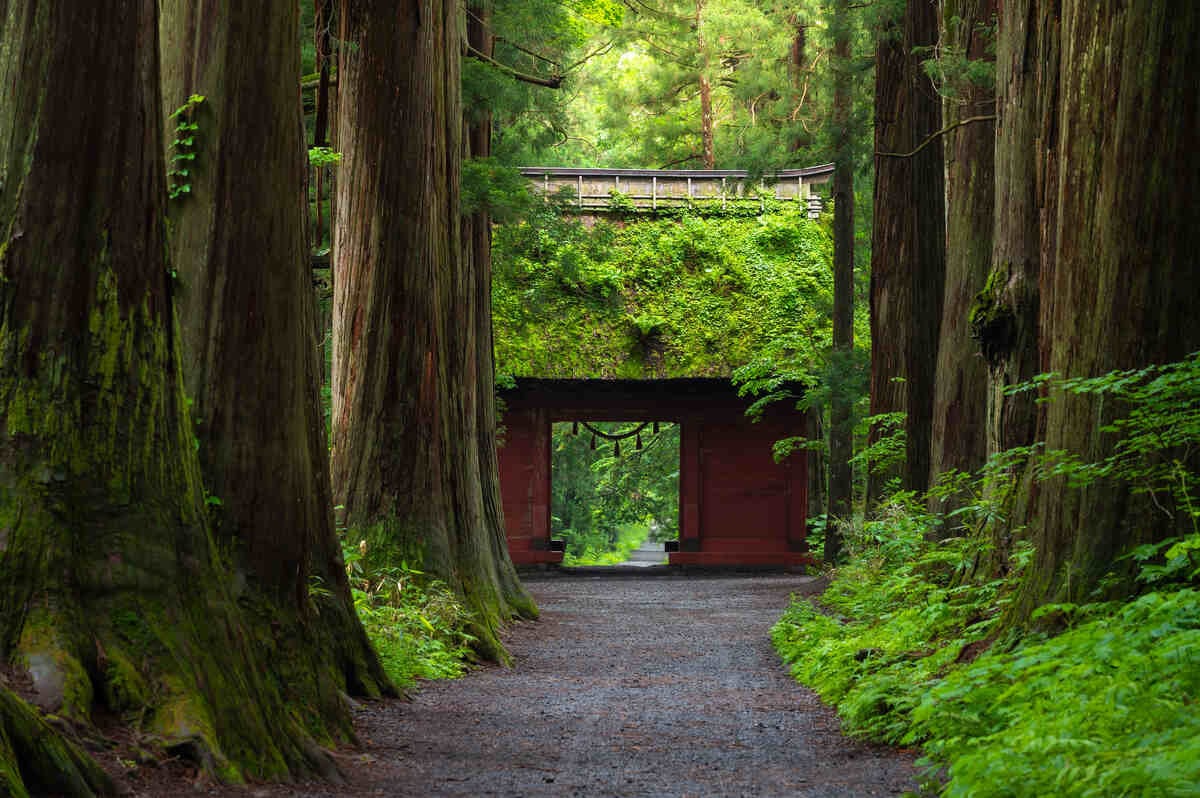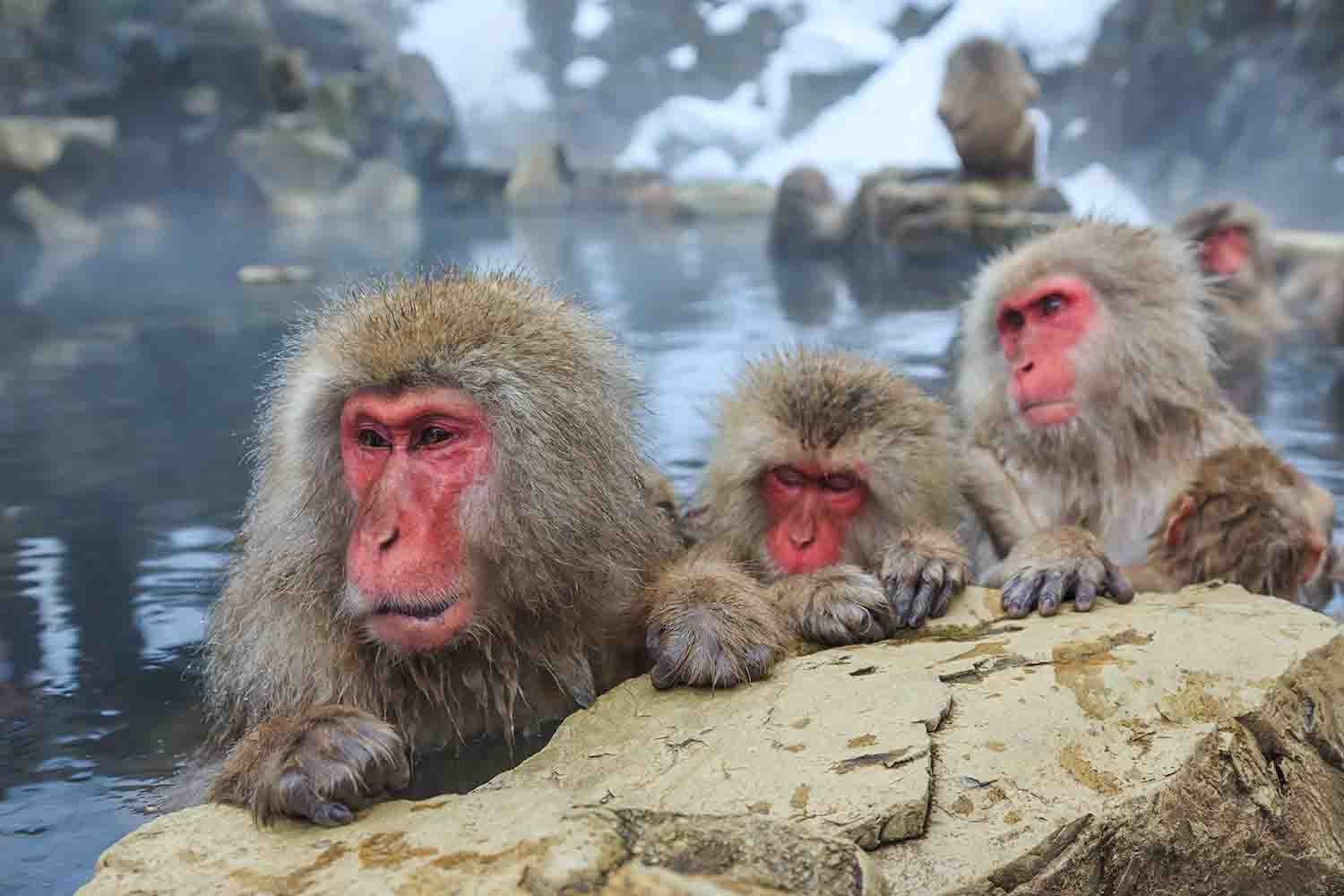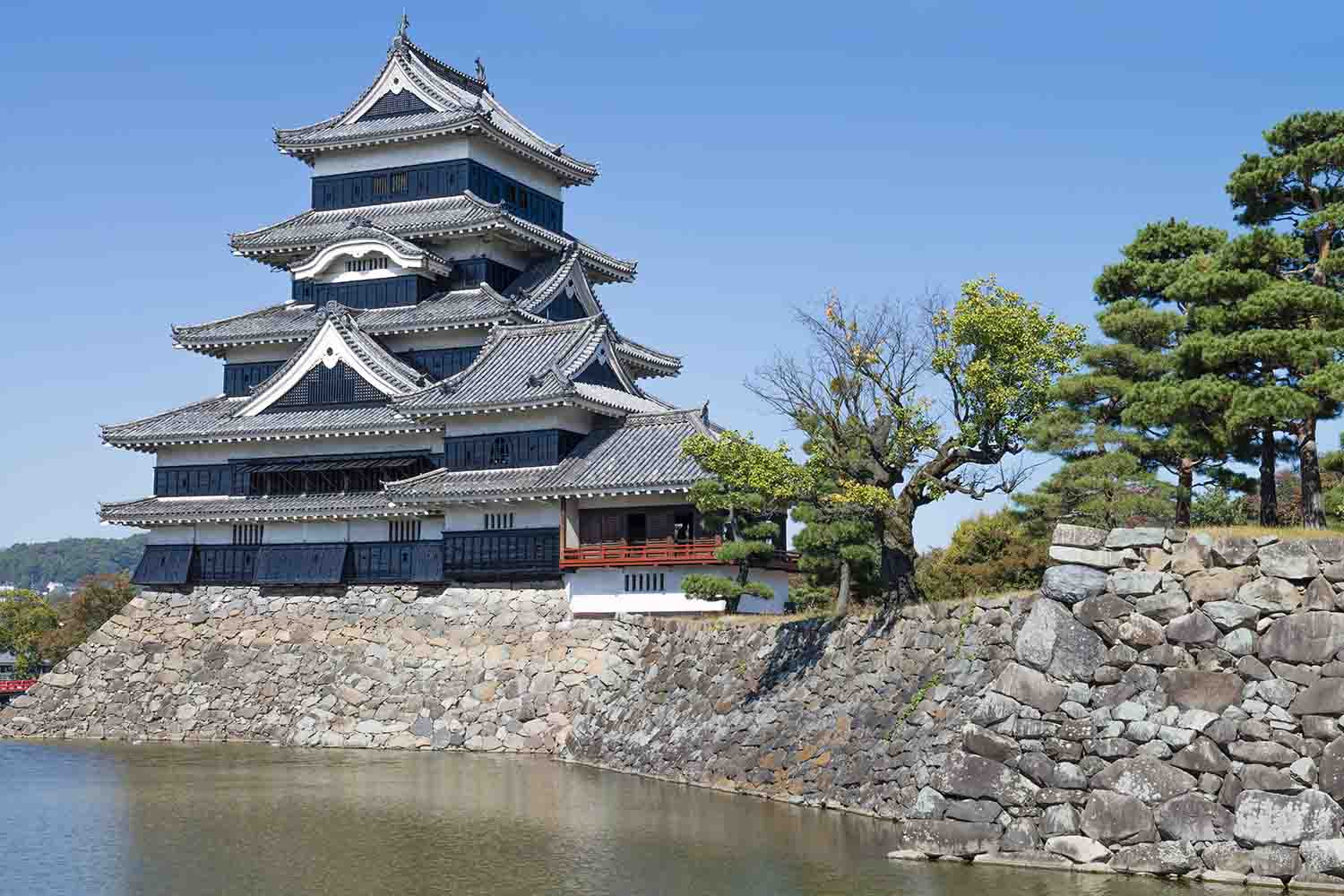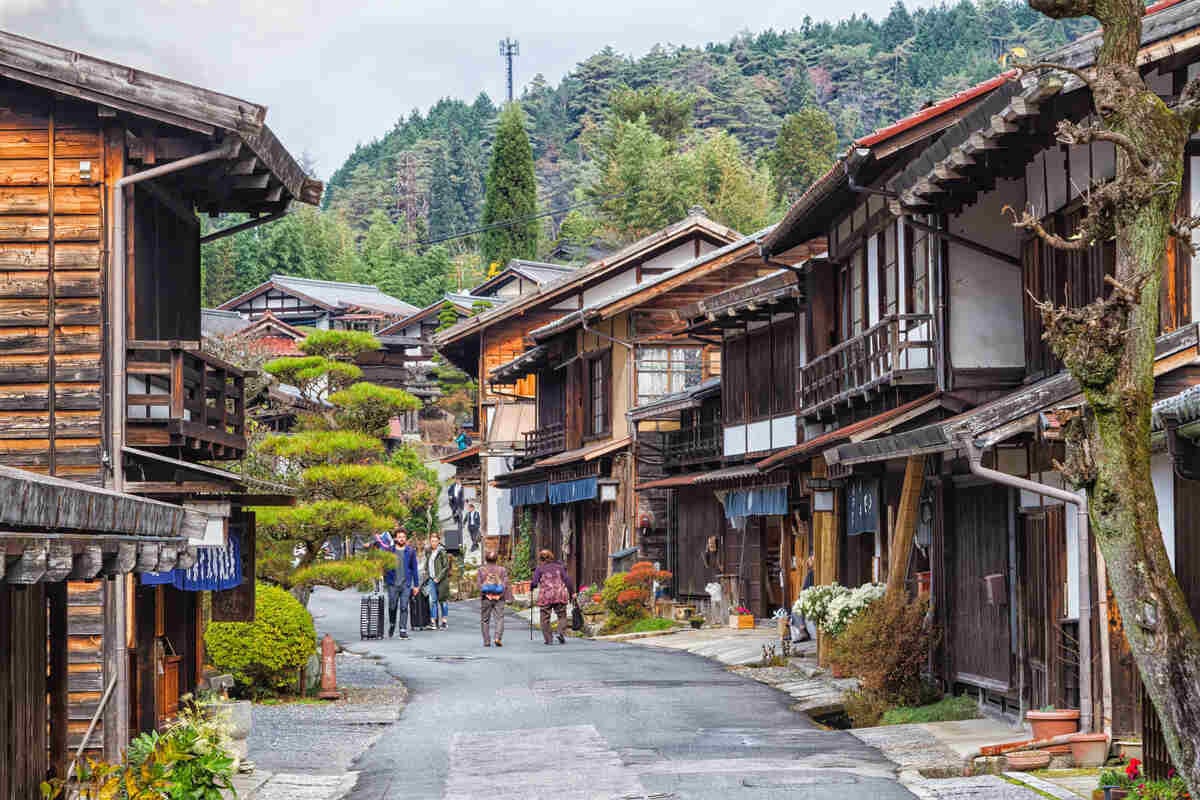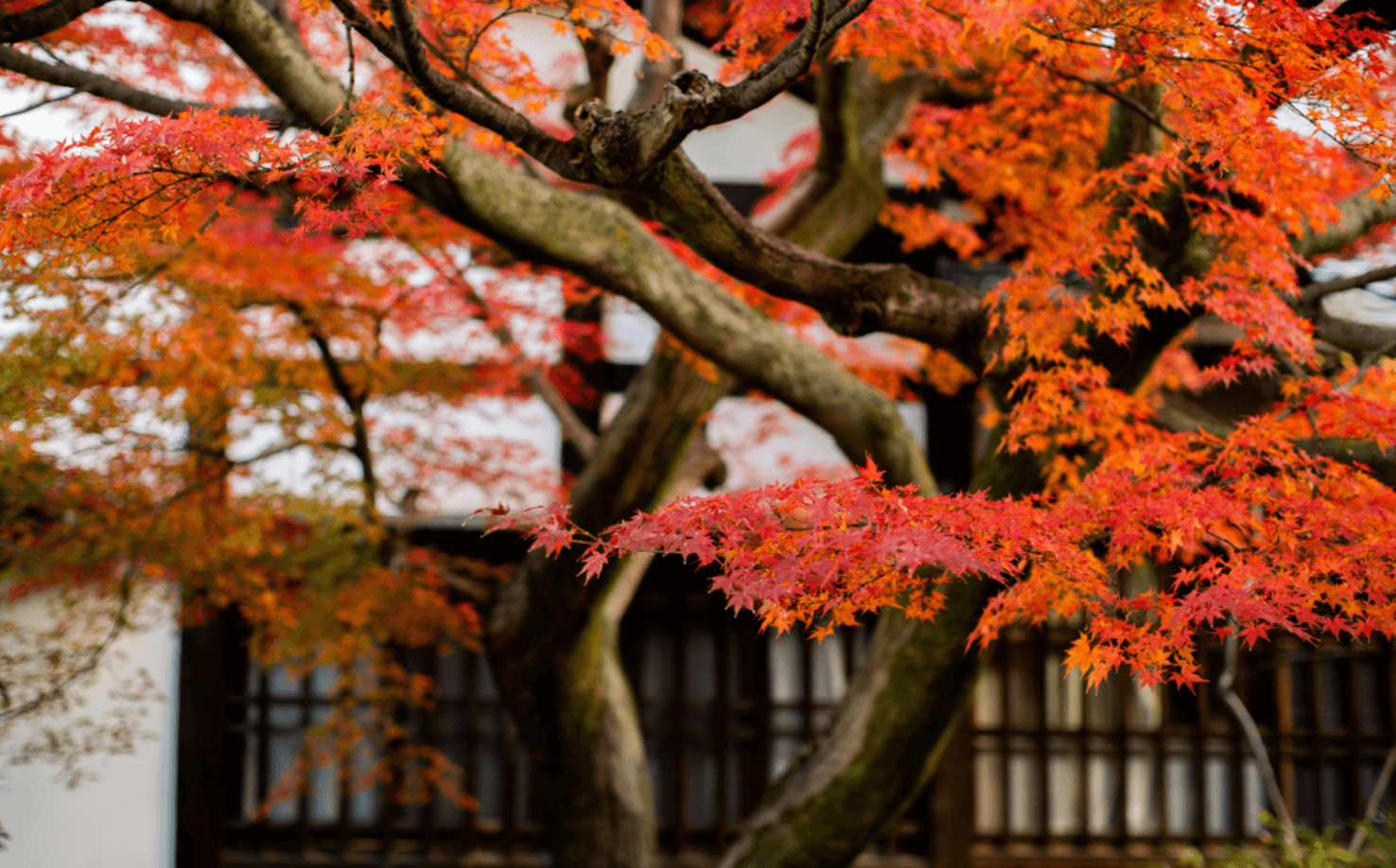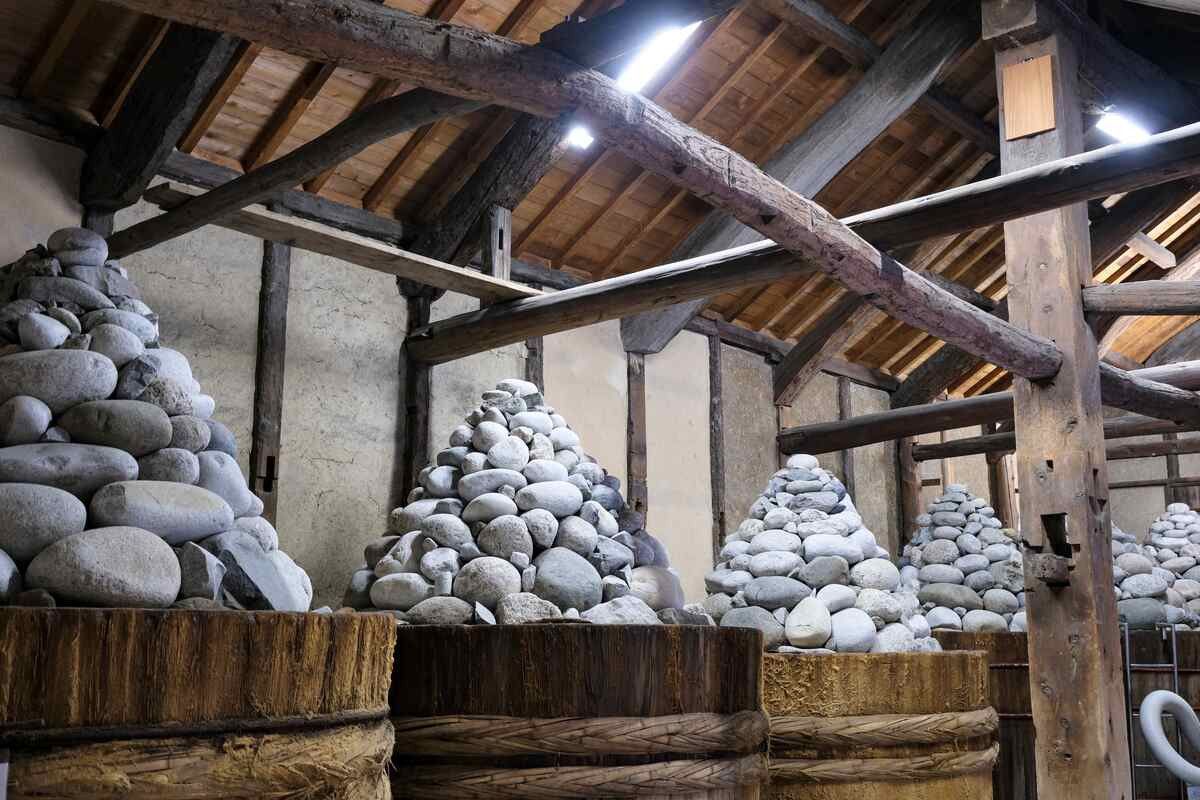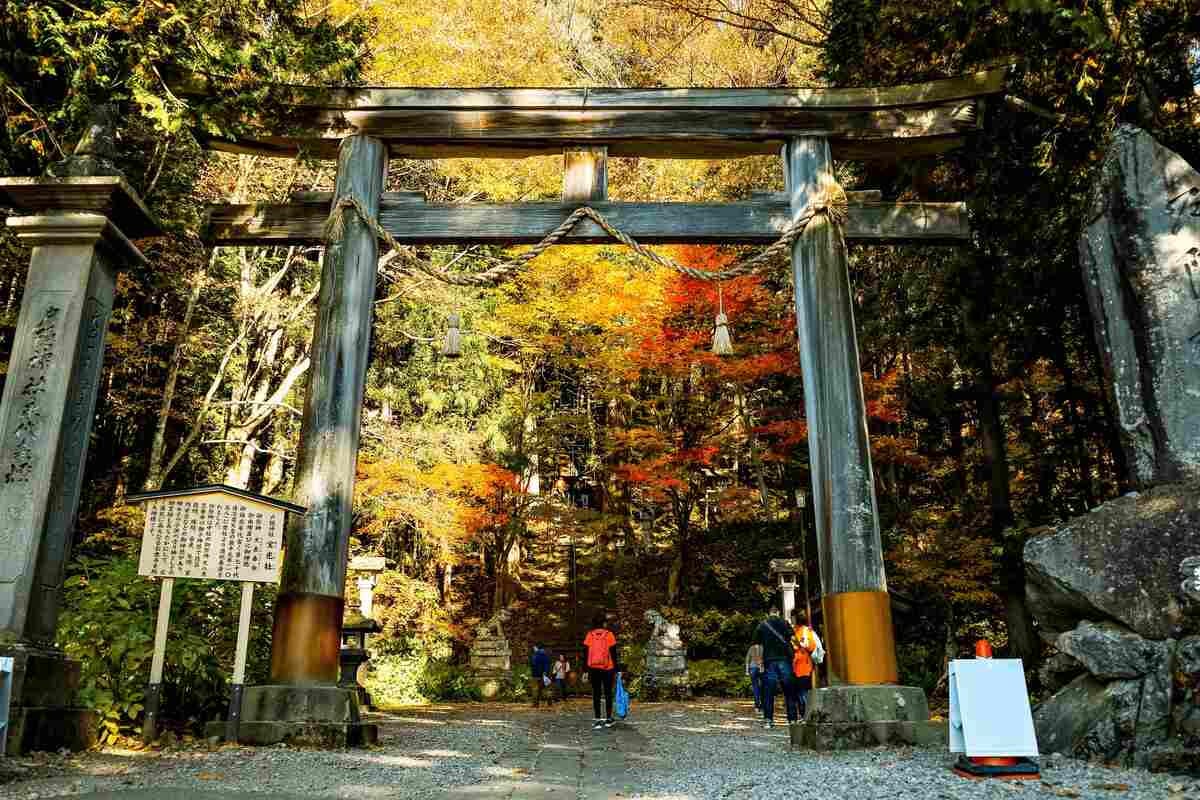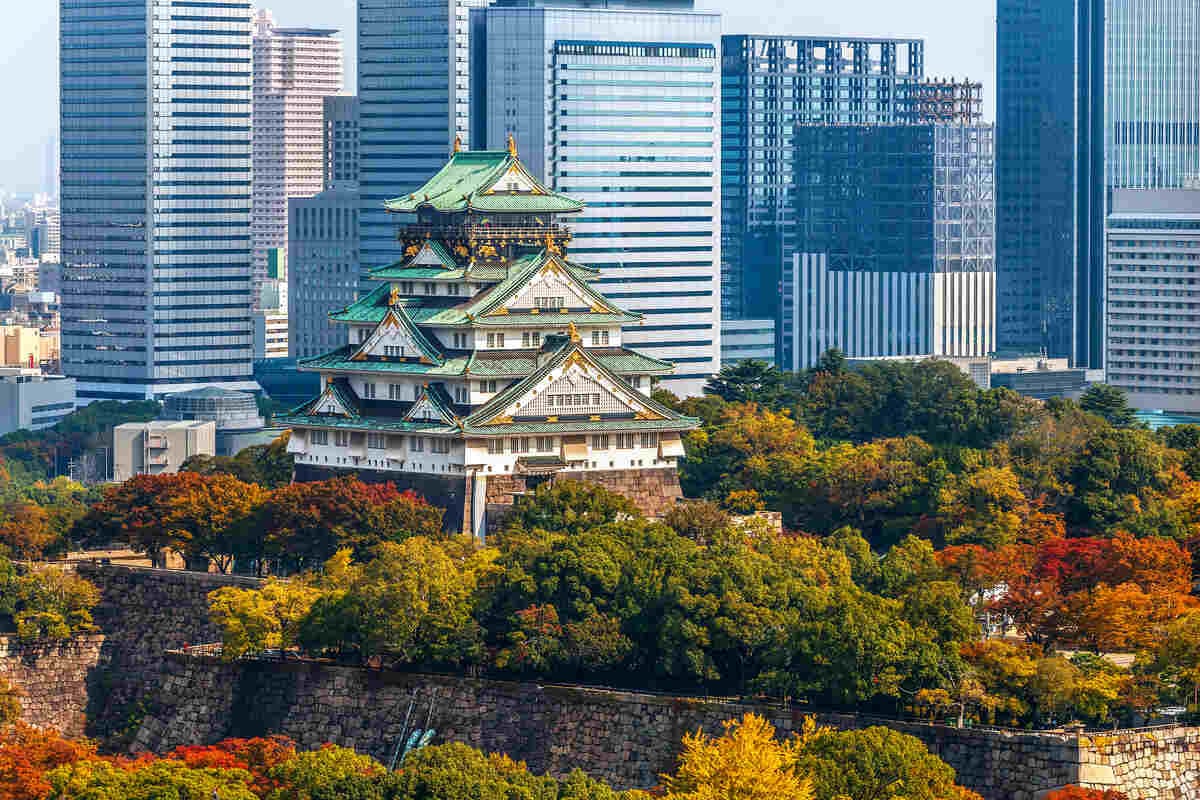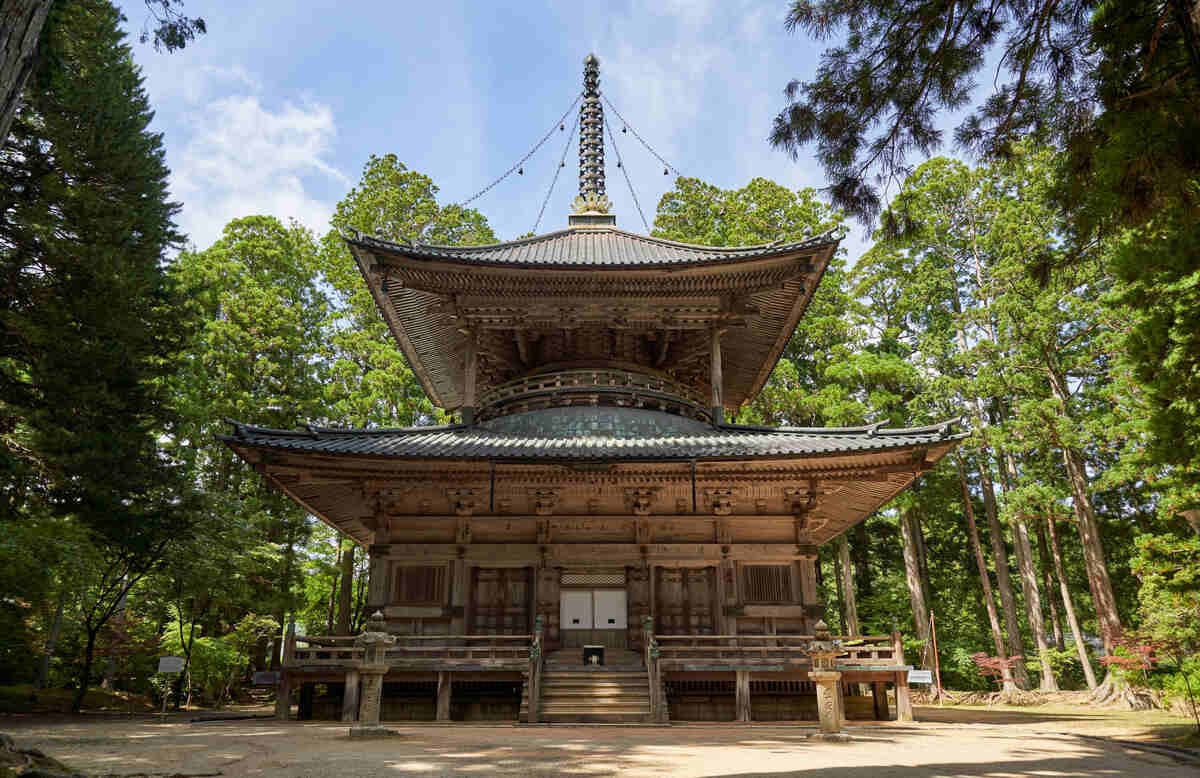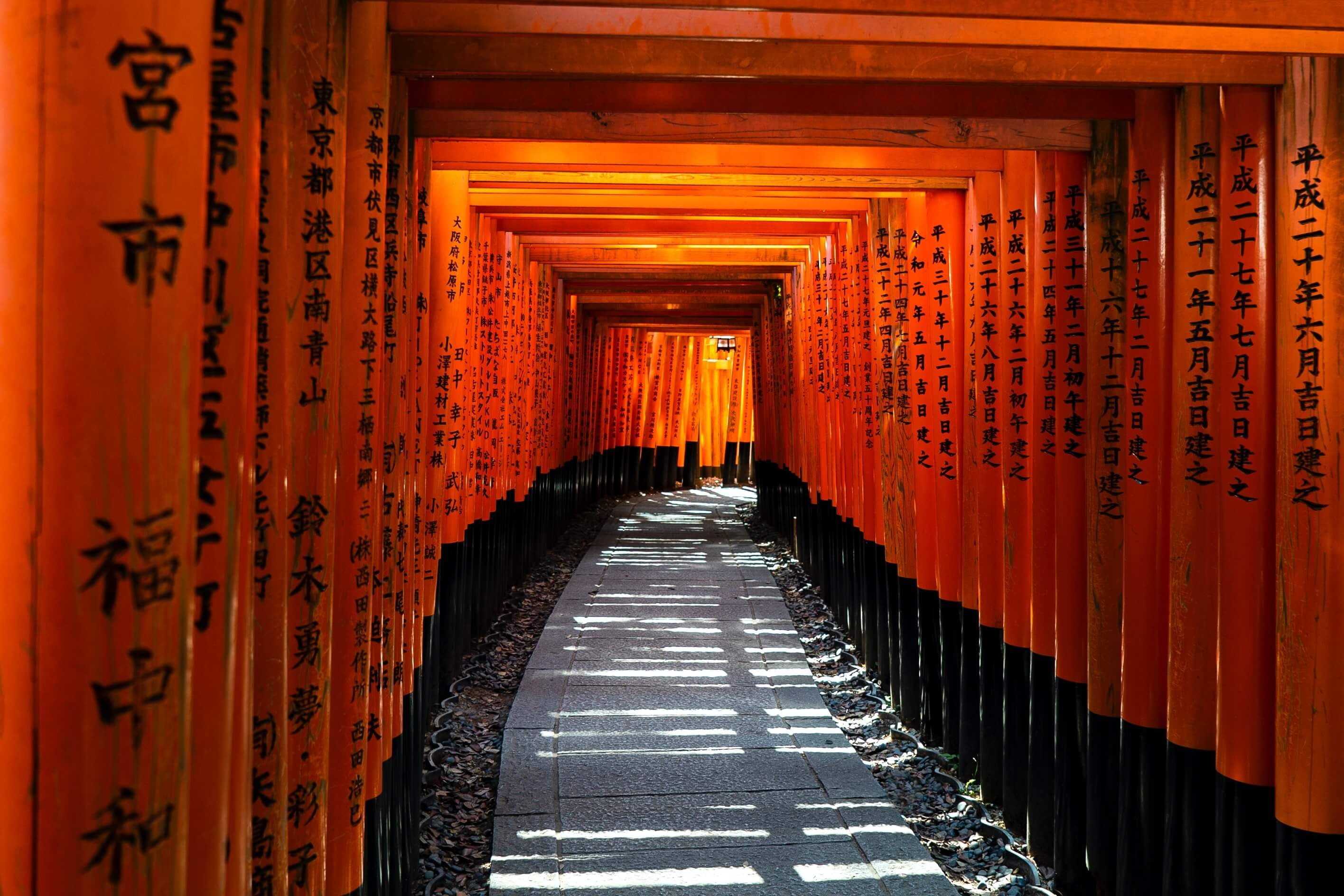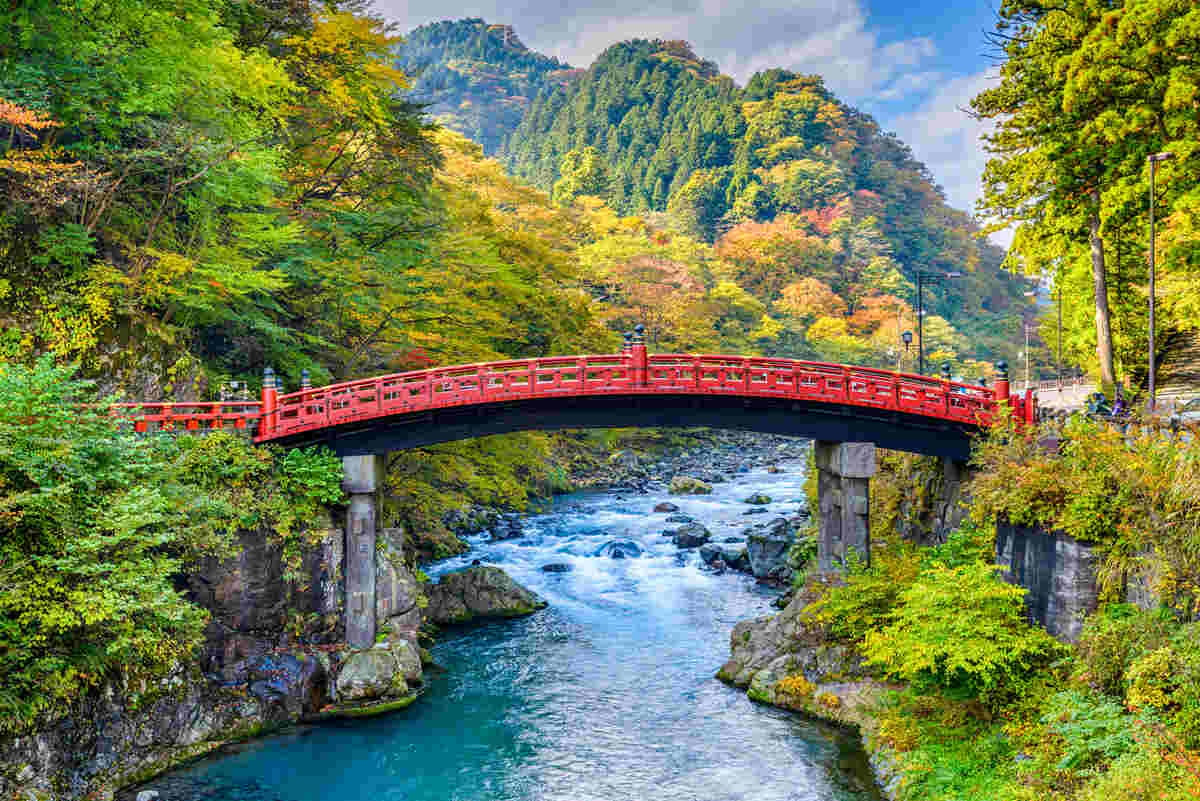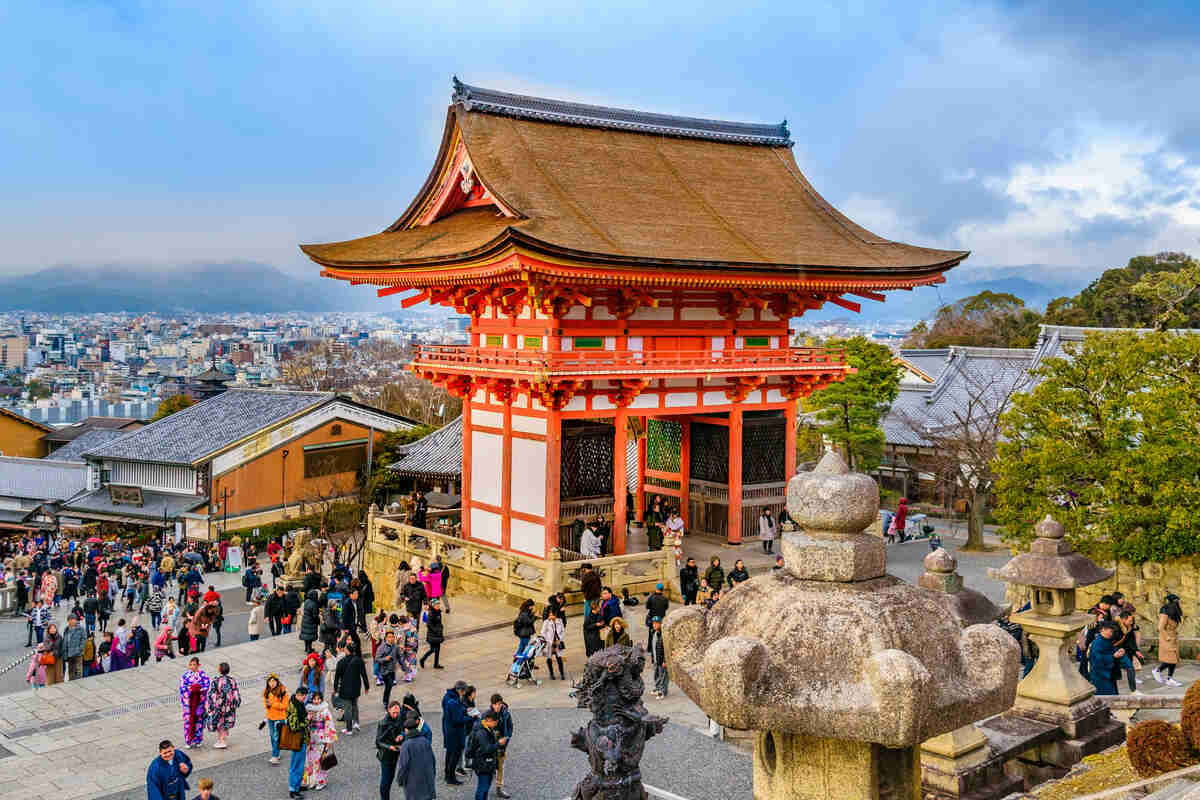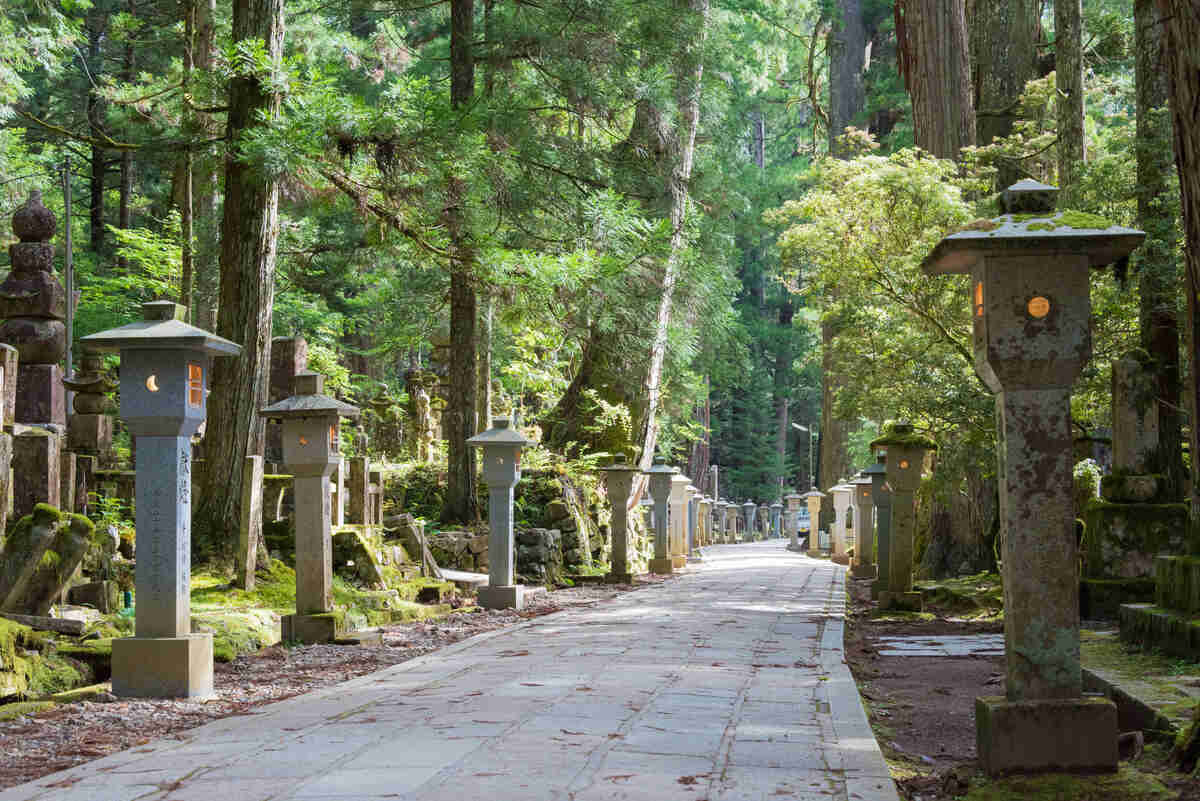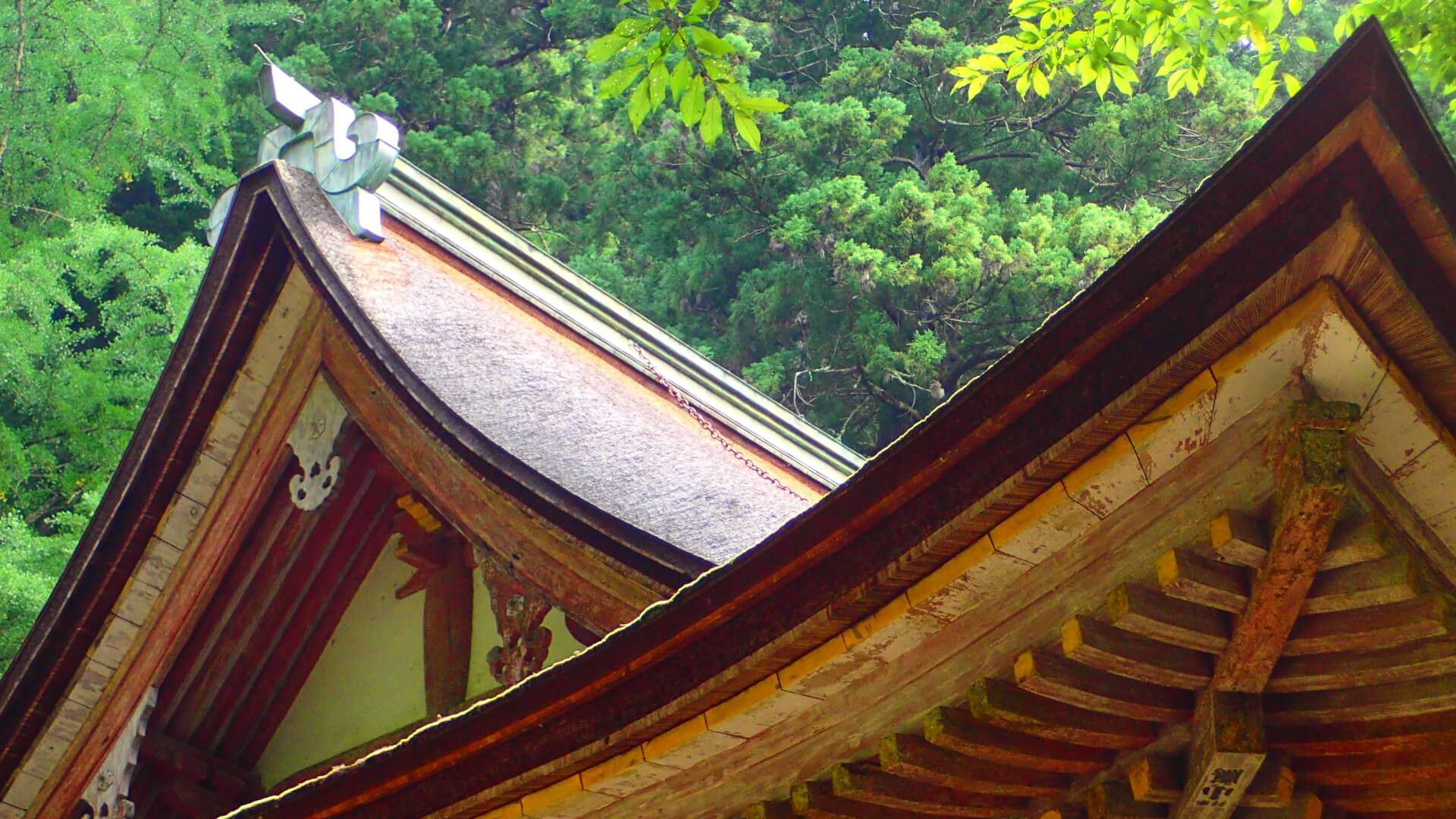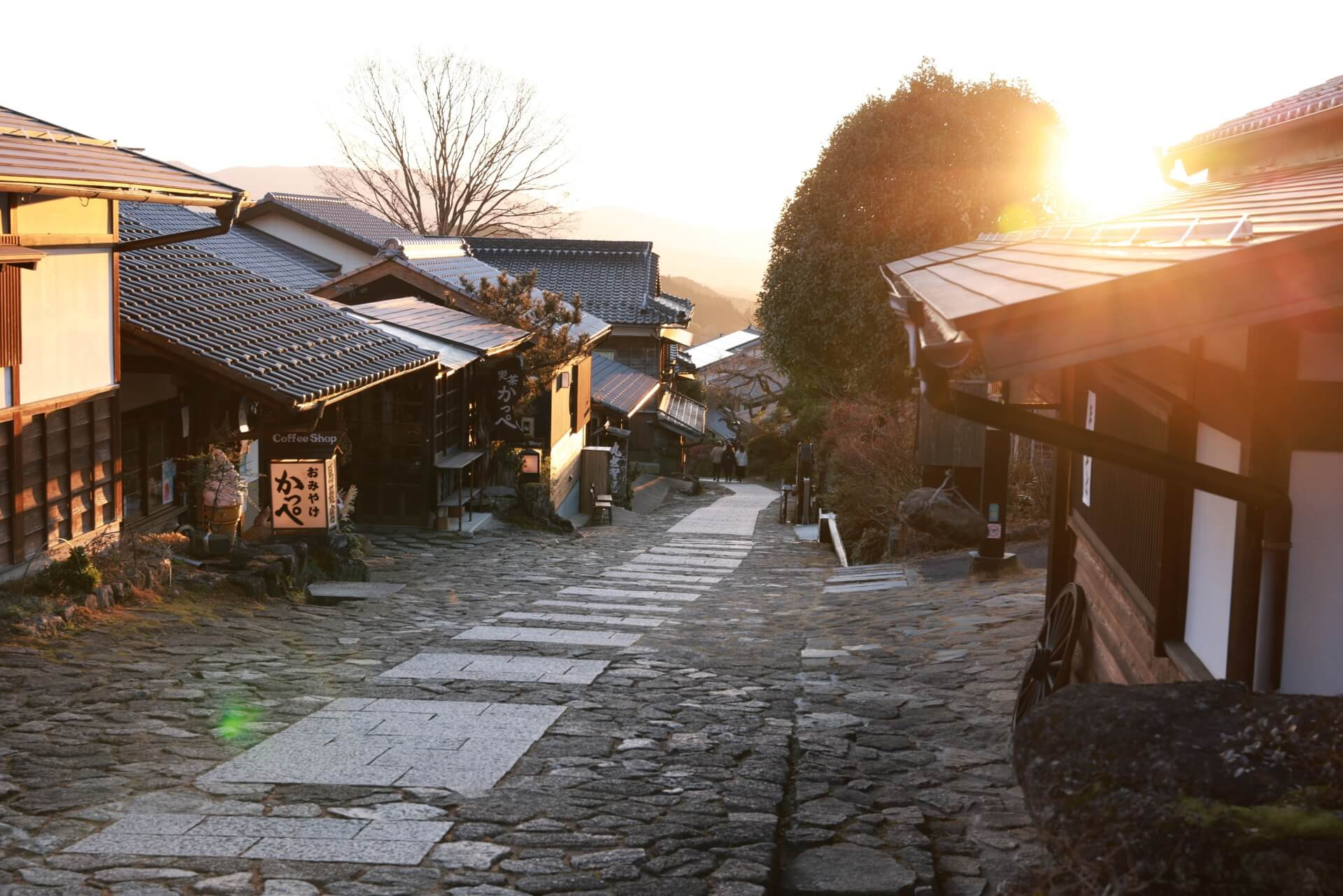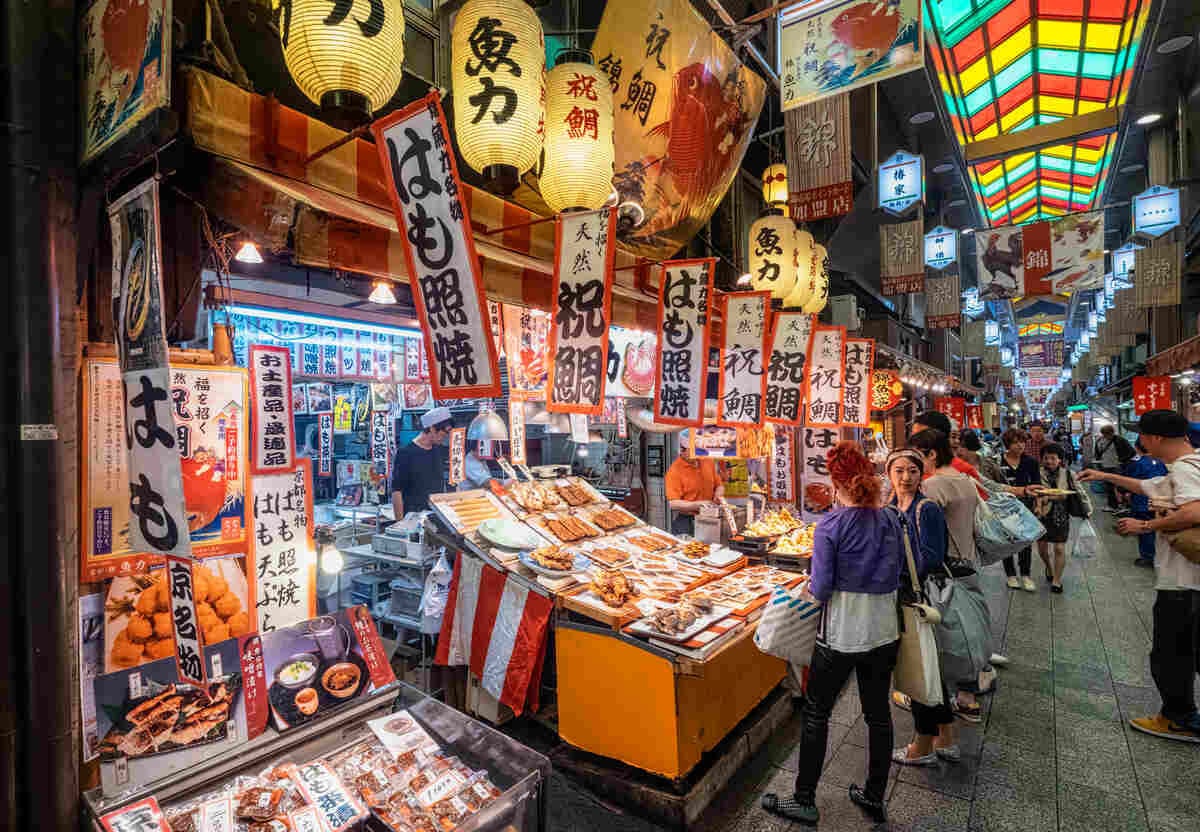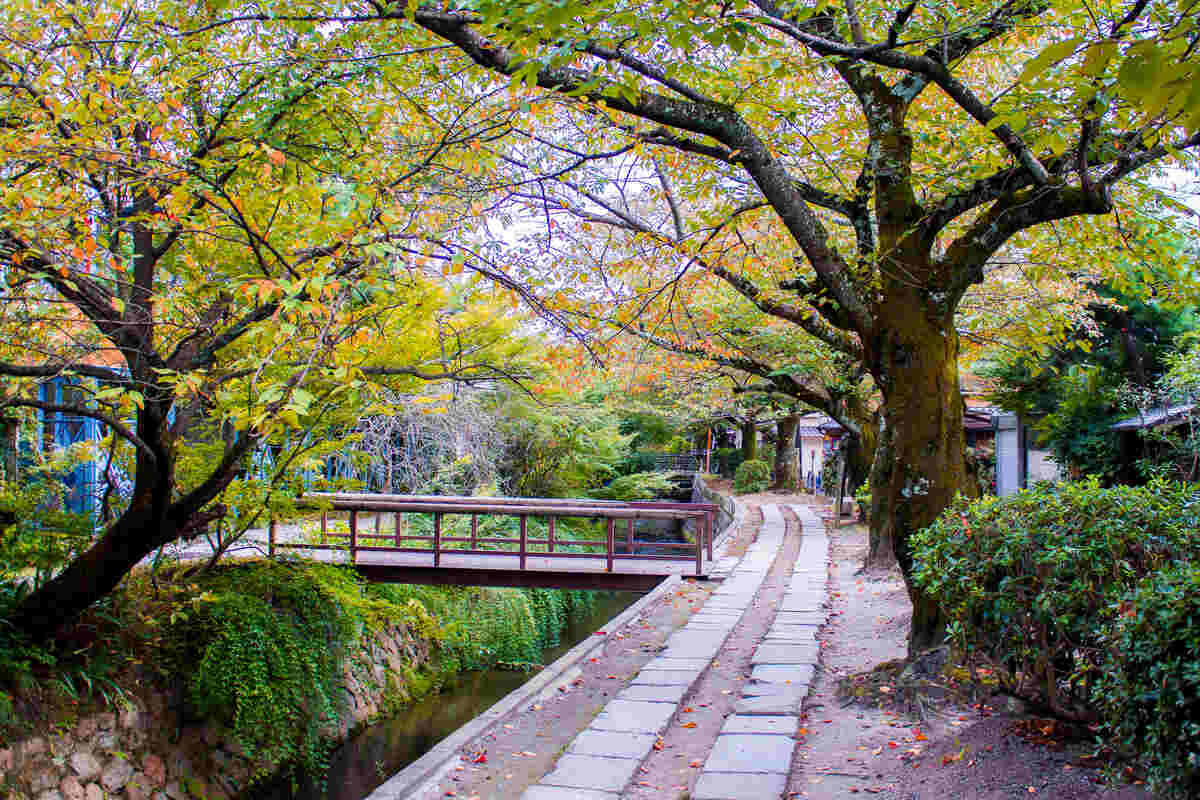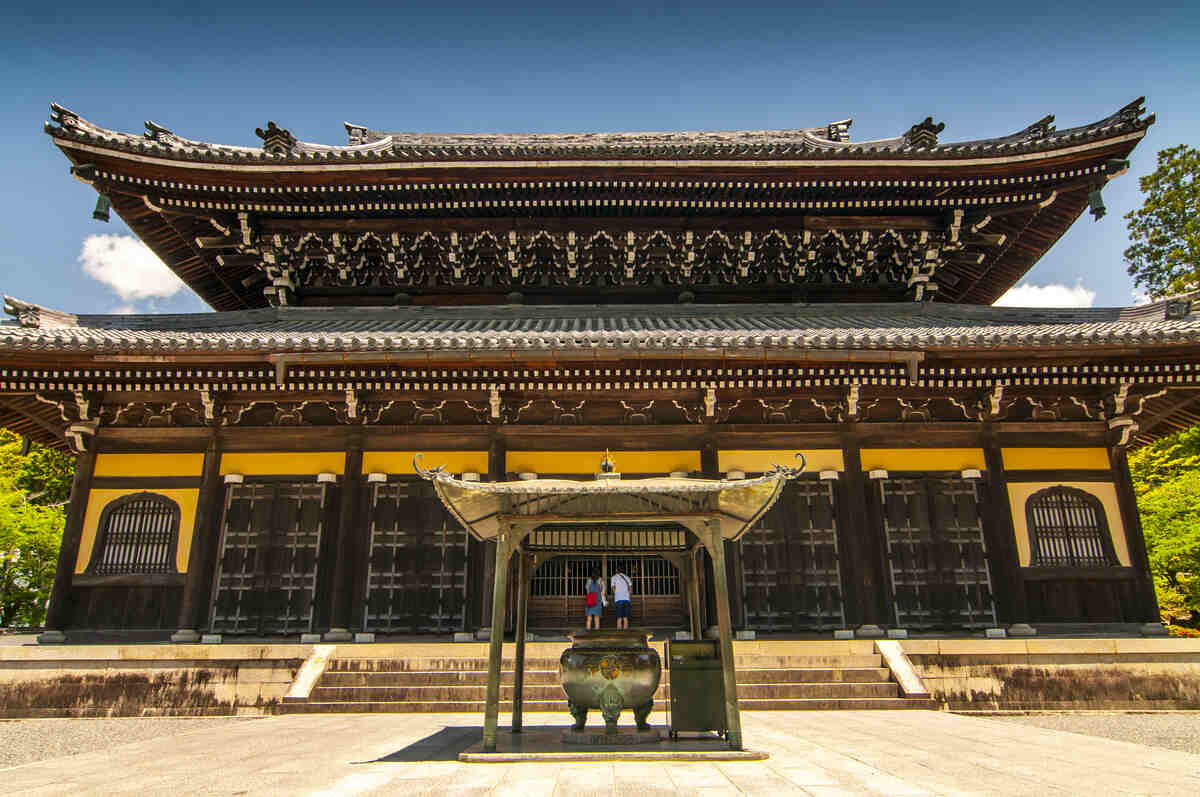Walking through the traditions & history of Japan
Walking through the traditions & history of Japan
$5999
Walking through the traditions & history of Japan
13 Days Starting in Tokyo, Japan and ending in Osaka, Japan
Visiting: Tokyo, Mount Takao, Yamanouchi, Mount Togakushi, Azumino, Kamikochi, Matsumoto, Kiso Valley, Kyoto, Koya, Osaka
Tour operator:
Tour code:
JAP-JA
Guide Type:
Fully Guided
Group size:
4 - 12
Age range:
12-90
Special diets catered:
Please advise requests
Tour operated in:
EnglishTrip Styles:
Interests:
Activities:
Tour Overview
A wonderful exploration of the Japanese Alps. Use local transport and gentle walks to discover hidden shrines on forested slopes, Onsen hot springs, and the places where time has stood still.
Highlights
Itinerary
Day 1: Arrival in Tokyo
Location: Tokyo
Accommodation Name: 3 star hotel
Your journey begins in the thriving urban jungle of Japan's capital city; Tokyo. Situated on the main island of Honshu, Tokyo offers the visitor a fabulous juxtaposition of uber-modern, alongside examples of traditional Japan which never fails to inspire, and excite.To keep flexibility for your arrival plans, we offer a shared shuttle service to transfer you directly to your hotel, where you can relax and rest after your long flight, or refresh and head out to explore. We provide you with a local Suica card that is preloaded with 1,500JPY and usable on most local public transport nationwide. This gives you flexibility throughout the trip, to customise your free time, for example by heading for a night out where there is free time.This evening, timing of arrival permitting, the group will meet together to enjoy a welcome briefing and dinner.For those arriving early, please note that you will be able to leave your luggage at the start hotel, but room check-in is only available after 15:00.Stay at: The Akasaka
Day 2: Mount Takao
Location: Mount Takao
Accommodation Name: 3 star hotel
Meals Included: Breakfast
Leaving the urbanised landscape of the Tokyo Metropolis behind this morning, we discover some tranquillity and fantastic views from the summit of Mount Takao (599m elevation), which, weather permitting, may include the peak of Mount Fuji. Just a little more than an hour's journey by train, we will head out after breakfast to explore the variety of easy-to-follow hiking trails that have been developed in the forested slopes of Takao-san. From the base of the mountain, we have the option of taking the most used Trail 1 - the 3km Omotesando Trail. It is paved and takes in the essential sites but will probably be the busiest, so you may wish to take one of the many other varied options to suit your aspirations and depending on whether you want to head over a suspension bridge, waterfall, or through plum groves! All routes converge at the summit observation deck.Near the summit look out for Temple Yakuoin where it is tradition to pray to the 'tengu' - a powerful mythical creature venerated in the Shinto & Buddhist religions - for good fortune. You may also like to have a look around the nature museum (free entry) to learn more about the ecology of the area. Returning to the city in the late afternoon, with all the sensory input that brings, we have an evening of leisure to eat as a group or independently. Stay at: The Akasaka
Day 3: Yamanouchi
Location: Yamanouchi
Accommodation Name: Guest house
Meals Included: Breakfast
We join the throng of locals using Tokyo's excellent public transport system to head to the train station for a Bullet Train west (2nd class ticket included), to the Japanese Alps. Arriving into Nagano, a temple town that hosted the Winter Olympic Games in 1998, we are just passing through at this point, en-route to our destination for the day, Yamanouchi. A small town popular for its abundant nature, plentiful hot springs and home to the snow monkeys of Jigokudani, Yamanouchi has long been known as an area to visit to seek refuge, to heal, and renew! We enjoy a short hike (25-40mins) through the forest to reach Jigokudani Yaen Koen, where the famous monkeys frequently bathe in the park's thermal pools to stay warm and relax - a wonderful photo opportunity if they oblige us with a good soak! (park pass included)After some time with the monkeys we set off on foot to explore the beautiful ancient hot spring resort of Shibu Onsen, which lies below the monkey park, alongside the Yokoyugawa River. Traditional ryokan (Japanese-style inns) line the narrow streets, some over 400 years old. We get to soak in the famous onsen, and enjoy a delicious regional dinner of local specialities. Transfer to Yamanouchi by local bus/train; entrance to Jigokudani Monkey Park included; hiking in Shibu Onsen and nearby areas; transfer to Nagano by local bus/train.Stay at: Nagano Tokyu Rei
Day 4: Mount Togakushi Shrines
Location: Mount Togakushi
Accommodation Name: Guest house
Meals Included: Breakfast, Lunch, Dinner
After a Japanese breakfast, we take public transport from Yamanouchi back to Nagano where we can leave our luggage and jump on a bus to take us up the winding mountain roads. Our destination today is Mount Togakushi, one of Japan's most sacred peaks, and home to 5 shrines located on the forested mountain slopes where the tall Japanese cedars create a mystical atmosphere, entirely suitable for an area steeped in Japanese mythology;On Kyushu, Amaterasu, the Sun Goddess is said to have hidden herself in a cave, blocking herself in with a boulder, and leaving the world in darkness. To lure her back out, the other deities performed a spectacular dance in front of the cave and as she peeked out, one of the deities grabbed the door to the cave and threw it away so she couldn't hide again. The stone door is said to have landed here, in Nagano Prefecture forming Mt Togakushi, which literally means 'hidden door'. 5 shrines were built to worship the mythical deities:First reaching Hokosha (lower shrine) you climb a long flight of stairs to its praying hall. A 2km ascent through the forest, with trees as old as 800 years, takes you to the middle shrines of Hinomikosha and Chusha which stand at the top of a small town of shops and restaurants. Continue a further 2km to reach the entrance to the upper shrines of Kuzuryusah and Okusha which lay homage to the god who threw the boulder and released sunlight back into the world. Over 300 cryptomeria trees line the approach to the temples and the shrine itself is spectacularly located on the steep mountainside, against a backdrop of peaks.We descend from the mountain, taking a bus (included) back to Nagano station and jumping on a train (ticket included) to Azumino where we stay at a wonderfully restored kominka (old folk house) with traditional Japanese decor, but Western bedding. Shared bathroom facilities.Stay at: Nagano Tokyu Rei
Day 5: Azumino
Location: Azumino
Accommodation Name: Guest house
Meals Included: Breakfast, Lunch, Dinner
This morning we explore rural Azumino with the fantastic opportunity to explore (including a boat tour) one of Japan's largest wasabi farms; Daio Wasabi Farm. Wasabi is a plant of the family Brassicaceae used to create a paste that frequently accompanies sushi and other Japanese dishes. Wasabi grows naturally along stream beds in mountain river valleys and Azumino has developed this cultivation to become one of the main production areas in the country. You may think you have tried it before, but outside of Japan, the high cost of wasabi means that the western horseradish is often used in its place - today you learn about how it is grown, but also get to taste the real thing for yourself. Sticking with the theme of traditional dishes, we attend a local workshop to learn how to make soba (buckwheat noodles) with the help of an expert. We enjoy the end-result for lunch before moving on to visit a miso brewery. Miso, a Japanese staple, is a fermented soybean paste that has recently gained much popularity in the Western world as part of a dietary regime to encourage a healthy gut biome. The beans are fermented with salt and koi (fungus Aspergillus oryzae) and sometimes other ingredients are added such as rice, barley or seaweed. It is high in protein and rich in vitamins and minerals and is used for soups, sauces and spreads, as well as for pickling vegetables, fish & meats. Last, but certainly not least, it would be remiss to not visit a 'nihonshu' brewery to learn more about the process used to make the infamous rice wine. In Japan, all alcoholic drinks are referred to as Sake. What we know as sake (fermented rice wine and soft water) is in fact, known as nihonshu. After a tasting, we return to the kominka in Azumino for dinner and to stay our second night. After a tasting, we take a coach ride to Matsumoto where we will stay the night.Stay at: Dormy Inn Matsumoto
Day 6: Kamikochi
Location: Kamikochi
Accommodation Name: 3 star hotel
Meals Included: Breakfast
After breakfast we purchase a packed lunch and jump on a bus (return ticket included) for a magnificent day in the mountains of Kamikochi, part of Chuba Sangaku National park. Kamikochi, in the Northern Japanese Alps, is a 15km plateau in the Azusa River valley, surrounded by tall mountains and the active volcano; Yakedake (2455m). A ban on cars has kept the area pristine and encouraged visitors to explore the choice of stunning hiking trails on foot. Not to be missed are Kappa bridge, the Takezawa marsh and Myojin pond (about 1hrs gentle walk on the flat). The views for your picnic will be breathtaking but at some point we tear ourselves away to return to Matsumoto where we stay in a convenient, westernised business hotel with all the modern facilities you required. We take the time to prepare our luggage for one night away with a change of clothes and personal supplies, and secure our main luggage which will be sent by courier (included) to our hotel in Kyoto.You have this evening free to enjoy Matsumoto (knowing we get to explore it during the day tomorrow).Stay at: Dormy Inn Matsumoto
Day 7: Matsumoto & Kiso-Fukushima
Location: Matsumoto
Accommodation Name: Guest house
Meals Included: Breakfast, Dinner
Wish your luggage 'sayonara' and feeling the freedom, we head to the famous Matsumoto 'hirajiro' (a castle built on a plain rather than a hill/mountain), one of just 12 original Japanese castles that have remained intact. The black wooden keep, built in the late 16th century has earnt the castle the name of Crow Castle, and is in remarkably good condition; particularly its wooden interiors and external stonework. Don't miss out on seeing some of the steepest staircases in Japan and the openings from where stones were dropped onto invaders. The views from the observation deck on the 6th floor are worth the climb. Depending on time, we may also visit the City Art Museum, with its collection of works by Yahoo Kusama, born in Matsumoto, before collecting our overnight bags from last nights hotel and taking train to Kiso Fukushima, gateway to the beautiful Kiso Valley (and quite unrelated to the village in Fukushima prefecture that was so badly affected by a tsunami a decade ago). We explore the village on foot and spend the night in a ryokan where we get to relax in beautiful hot springs and enjoy a delicious dinner. Stay at: Kaido Roman Onyado Tsutaya
Day 8: Post towns of the Kiso Valley
Location: Kiso Valley
Accommodation Name: 3 star hotel
Meals Included: Breakfast
The Kiso valley runs alongside the mountains of the Central Japanese Alps. An ancient trade route, running 70kms along the valley, served as an essential means of commerce, particularly at the start of the Edo Period when it was joined to other local trade routes to form the 500km long Nakasendo ("path through the mountains"). This route offered an effective alternative for trade between Edo & Kyoto, to the coastal path (the Tokaido). Due to restrictions by the shogunate, in ancient times travellers were almost always forced to make their trips on foot, so every few kilometres 'post towns' popped up to provide accommodation and sustenance. A few towns in the valley, particularly Magome & Tsumago, have been preserved to look as they did when the served travellers, with stone paths and wooden buildings taking you back to a bygone era. After a traditional Japanese breakfast we check out of our ryokan and journey to Nakatsugawa by train, then a local bus to Magome-juku for the start of a wonderful Nakasendo hike. The gentle walk, at a leisurely pace, takes us from the post town of Magome, to Tsumago. Here we pause and refresh before continuing for a little less than an hour to the nearby village of Nagiso. We jump on a train (included), to the city of Nagoya and transfer onto a Shinkansen (bullet train) for Kyoto where we are re-united, at our hotel, with our luggage. You have free time for an explore and dinner.Stay at: Miyako Hotel Hachijo
Day 9: Kyoto
Location: Kyoto
Accommodation Name: 3 star hotel
Meals Included: Breakfast
Japan's former capital (some might say 'better capital) is waiting to be explored this morning - and there is SO much to see! The eastern side of the city is best walked at a leisurely pace from North to South to appreciate the numerous historic sites, but first we could do with some perspective, so we use public transport to arrive at the start of a short trail (1.5km, 220m ascent) to the top of one of Kyoto's most iconic mountains; Mt Daimonji. It gives us long panoramic views over Kyoto and is famous for the large Japanese character '大' meaning 'big', carved on the mountain side. At the foot of the mountain lies the Ginkakuji ("Silver Pavillion"), one of the most exquisite zen temples in the city (entrance included), and a former retirement villa of a shogun before it was converted into a temple in 1492. As well as the main pavilion, there are half a dozen other temple buildings, a beautiful moss garden and a unique dry sand garden; the 'Sea of Silver Sand. From here we wander south along the Philosophers path, a tree lined canal-side pathway named after Nishida Kitaro, one of Japan's most famous philosophers who walked to Kyoto University by this route. The pathway takes us past the Eikando and Nanzenji temples and we veer off here to visit Heian Jingu (entrance included). Heian is the former name of Kyoto, and this shrine, modelled after the ancient Imperial Palace and built just over a century ago, is dedicated to the spirits of the first and last emperors who reigned the city. Nishiki Market offers us the perfect lunch opportunity before we walk through Gion the most famous 'hanamachi' (Geisha District) in the city. As we continue our walk south, we visit 'Yasaka', one of the most well known shrines in Kyoto, fronted by a dance stage where hundreds of lanterns, lit each evening and bearing the name of local businesses, hang in the breeze. Next up is the beautifully preserved historical district of Higashiyama, famous for its narrow lanes, wooden buildings and traditional merchant inns.We end our tour at the stunning UNESCO World Heritage site of Kyomizudera, the temple of pure water, founded in 780, and one of the most celebrated Buddhist temples of Japan. The wooden stage that protrudes from the main hall and offers beautiful views of the city and surrounding hillside, was built entirely without the use of nails! We return to our hotel for a well earned relaxing evening at leisure.Stay at: Miyako Hotel Hachijo
Day 10: Kibune, Kurama, Kyoto
Location: Kyoto
Accommodation Name: 3 star hotel
Meals Included: Breakfast
Today we experience one of the most beautiful hikes in the Kansai region. Using the cute Eizan train to Kibune-guchi station, we walk for 20mins or so to the village of Kibune, renowned for its traditional inns offering Kawadoko dining on top of the decks that span the narrow river.We walk up a lantern-lined stone path to reach the Kibune shrine, erected in honour of the water goddess who travelled to the spot in a yellow boat (ki+bune). From here we start our hike (1hr) to Kurama-Dera temple, up an occasionally steep trail, through the majestic cedar forests. Here we find the main temple in Mount Kurama, dating back to 770, and known for its spirituality and breathtaking natural beauty. The temple's main hall offers a gorgeous view out over the surrounding mountains and is believed to be the birthplace of reiki.Tengu, long-nosed or beaked creatures, thought to be guardians of the mountain, can be found as statues, arts and souvenirs in the village and temple complex. We visit the temple before walking down to the village where you can relax and enjoy some free time, with the option of bathing in a local onsen. After a tranquil day, immersed in nature, we take the train back to Kyoto (included) for an evening at leisure.Stay at: Miyako Hotel Hachijo
Day 11: Mount Koya
Location: Koya
Accommodation Name: 3 star hotel
Meals Included: Breakfast, Dinner
Mount Koya is our destination today, a temple settlement (and UNESCO Heritage site) in Wakayama prefecture, south of Osaka.We enjoy all manner of transport this morning: a train from Kyoto to Osaka, crossing the city to Namba station for another train bound for Gokurakubashi, and then a cable car climbing up the mountain! Finally we use a local bus for the last leg of our journey, into the heart of Koya-san.In 805 Kobo Daishi, one of Japan's most significant religious figures introduced Shingon Buddhism to the area, Koya-san becoming the sect's religious centre. Over 100 temples have sprung up along the streets, transforming it into a secluded temple town. We visit Kongobuji temple, with its beautiful sliding doors and famous rock garden, and the atmospheric Okunoiun cemetery, the largest in Japan, with over 200,000 tombstones lining the 2km approach to Kobo Daishi's mausoleum.This evening we stay at a Shukubo - a temple offering lodging which gives us some insight into the simple and traditional lifestyle led by Buddhist monks. We will have simple private Japanese rooms, with tatami floors, sliding doors and shared toilets. Futon mattresses are spread on the tatami floor for sleeping. Dinner will be served early with unique vegetarian cuisine called shojin-ryori. We will be given access to the temple, halls and garden as well as its communal, gender-separated baths.Stay at: Henjoson Inn or similar
Day 12: Mount Koya to Osaka
Location: Osaka
Accommodation Name: 3 star hotel
Meals Included: Breakfast
Guests staying at the temple are invited by the monks to participate in morning prayers (starting around 06:00), followed by breakfast at around 7.00.We spend the morning in Koya-San, perhaps choosing to walk a part of the Choishi Michi, the old pilgrimage trails winding up the mountain. They are marked by stone signposts every few hundred metres. A variety of trails are available to suit your aspirations. Alternatively, you may wish to wander around the town, relaxing and absorbing the serene and spiritual atmosphere, before choosing somewhere for lunch.Don't eat too much at lunchtime as this afternoon we will make our way back to Osaka for our last evening in Japan. Osaka is well known for being Japan's kitchen: a city for foodies! 'Kuidaore' is a quintessentially Osaka word meaning 'eat until you drop', and embodies the dedication of the local people to their food.Time permitting we will visit the Dotombori area - known for its food markets. After a celebratory group meal, your leader will accompany you back to your hotel and say goodbye.Stay at: Osaka Hinode
Day 13: Travel Home
Location: Osaka
Meals Included: Breakfast
After breakfast you have some leisure time until your airport transfer by limousine bus (a scheduled service departing at fixed times from various stops around the city). Your guide will have explained to you how to reach the bus stop, or you can ask for help at your hotel reception.Time to plan your next escape!
What's Included
-
Accommodation
Accommodation as detailed
-
Airport Transfers at Destination
Yes
-
Fully Guided
Supporting you on your holiday from Day 2 (arrival in Tokyo) to the evening of Day 13 (before you travel home on Day 14) will be an experienced, local, English speaking Japanese guide with a good knowledge of the areas visited.
-
Meals
Meals as detailed
What's Not Included
-
Additional Services
-
International Travel
-
Insurance
Accommodation
We fully believe in, and practice, Responsible Tourism and recognise the value of using hotels run by locals. The accommodation on this adventure really accentuates your experience and the mixture of hotels you will be staying in is very representative of the contrasts found in Japan. We feel that using different types of hotels helps deliver to you the complexity of Japan. It is a crazy patchwork of ancient & modern, corporate & family businesses, nature and urban, all of which coexist peacefully side by side. To authentically represent Japan, we have included as many of these as we can!
Having said that, there are themes with the various types of accommodation, and they will all be chosen for cleanliness, comfort, safety, proximity to our route (to avoid unnecessary extra travel which in Japan can be very expensive) and a warm client welcome, as well as reliability in their service to us.
Please be aware that in areas where tourism is still developing, and in more rural or remote areas, we may not have a wide range of options. An aspect of our adventures is to escape the ‘trappings’ of familiar culture and to experience new things with are exciting and memorable and reflect the country we are visiting.
The list below gives information on our first choice of accommodation for this adventure. Where hotels are fully booked or unavailable, we will use an alternative of a similar standard, and equally well situated. We will provide you with an accurate list of accommodation, with contact information to leave with relatives, prior to departure on your adventure.
Tokyo (Day 2 & 3): Hotel Sunshine City Prince. Modern 3* hotel (tower block) with ensuite rooms, wi-fi, in a convenient location in Ikebukuro for sightseeing and within easy reach of the train stations for our onward travel.
Shibu Onsen (Day 4): Shibu Hotel . Charming Japanese ryokan in Shibu Onsen (4*) with hot spring Onsen baths (indoor and outdoor). Ensuite rooms.
Azumino (Day 5 & 6): Kominka Countryside House, Private rooms but with shared bathroom facilities. Western bedding.
Matsumoto (Day 7): Dormy Inn, Matsumoto. 3* modern hotel with all the expected facilities. Ensuite rooms and wifi. Indoor and outdoor Onsen.
Kiso Fukushima (Day 8): Kaido Roman Onyado Tsutaya. 3* idyllic inn, over 320 years old, surrounded by the history of the Kiso highway. Natural hot springs. Ensuite rooms with tv, air conditioning. Yukata (summer robe) available. Restaurant.
Kyoto (Day 9 - 11): Oriental Hotel Kyoto Rokujo. 4* stylish hotel in Kyoto, with a focus on serenity & hospitality. Ensuite rooms with a Japanese design. Restaurant, cafe & gift shop.
Koya (Day 12): Henjoson In. Traditional and historic ryokan with garden and terrace. Private rooms with shared facilities. Futon beds on a tatami mat floor
Osaka (Day 13): Hiyori Hotel Osaka Namba Station. Modern 4* Japanese style hotel in a fantastic location for sightseeing in Osaka and Kansai. Ensuite rooms with tv and wifi. Garden, restaurant & cafe.
Check out our Q&As
-
Are flights included in this tour?
No, Flights are not included in the cost of your holiday, and whilst we are happy to help advise you, responsibility for booking the correct flights rests with you. We recommend that you use a comparison tool such as www.momondo.co.uk or www.skyscanner.net when searching for flights.
-
Are airport transfers included in this tour?
Yes, shared transfer shuttle serves both airports. Narita Airport: This is one of the international airports serving the Greater Tokyo Area of Japan, located 60km east of central Tokyo. Haneda airport (aka Tokyo International Airport): The second international airport serving the Greater Tokyo Area, base for Japan Airlines and Nippon Airways. Located 30kms south of the city. You will be met with a signboard at the arrival exit by the shuttle service for the transfer to your hotel.
-
Is there a supplement for solo travellers?
Yes, Unless you have booked a single room (where they are available) and paid the single room supplement for those nights, you will be sharing a twin room with another client (of the same gender).
-
What is the standard of the hotels on this tour?
As detailed in Itinerary.
-
What is the fitness level required to do this tour?
This adventure is a fabulous mix of sightseeing using public transport, and exploring on foot. To get the most of out of this adventure, you need to be in good physical health, and enjoy walking as a way of exploring an area. You do not need to be an experienced hiker as the walks on the itinerary are taken at a leisurely pace (to enable wildlife spotting and photography) on well trodden paths, for short or intermediate periods of time (max of 3hrs) and with regular stops. You will be carrying just a day pack and bottle of water (bottled water) when walking or sightseeing. Walking shoes or lightweight walking boots are more appropriate for this trip than hard and heavy walking boots.
-
Are the local guides on the tour English speaking?
Yes, Supporting you on your holiday from Day 2 (arrival in Tokyo) to the evening of Day 13 (before you travel home on Day 14) will be an experienced, local, English speaking Japanese guide with a good knowledge of the areas visited.
-
Is there any free time to explore places during the tour?
As detailed in Itinerary.
-
What is the maximum group size?
The max group size is 10 people.
-
How long has the tour company been trading?
Since 2015
-
Risk Assessment
YellowWood operates a Safety Management System which encompasses a planned, researched, implemented and reviewed approach to your Health & Safety. A risk assessment is a careful examination of what could cause harm (hazards) and the assessment of likelihood of hazards occuring, as well as the severity of the outcome of a hazard.
-
What policies are in place for Covid-19?
Please contact us for our latest Covid-19 policies
-
Experienced Leaders
On all of our adventures you will benefit from the daily presence of an experienced, English speaking local guide. You will also have additional guides at various points during the trip (see itineraries for details).
-
What Ethical Travel credentials does the tour company have?
As a visitor to a foreign country, we inevitably leave our mark. At YellowWood Adventures, we are determined that this ‘mark’ will be a positive one. Tourism is not always beneficial and we are conscious of treading lightly in the lands we explore.
Reviews of this operator
1 Select your preferred date
Saturday - Thursday
Apr 12, 2025 - Apr 24, 2025Saturday - Thursday
May 10, 2025 - May 22, 2025Saturday - Thursday
Sep 06, 2025 - Sep 18, 2025Saturday - Thursday
Oct 11, 2025 - Oct 23, 2025Saturday - Thursday
Nov 15, 2025 - Nov 27, 2025Book with Confidence
-
Low Deposit
YellowWood Adventures requires a minimum deposit of 400 GBP per person or the full booking value, whichever is less, with the final balance not due until 56 days before departure.
-
Cancellation Policy
We don't charge a cancellation fee, here is a summary of yellowwood adventures charges.
Up to 57 days before tour starts: Forfeit 100% of deposit.
At 56 days before tour starts: Forfeit 100% of booking price.
